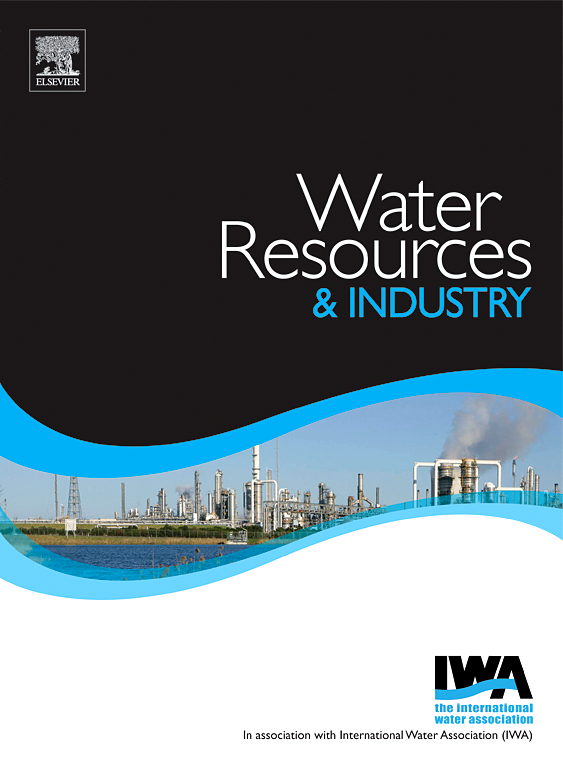Groundwater potential in mining regions for drinking water supply: A case study of the Żelatowa intake (Chrzanów, Poland)
IF 7.5
3区 工程技术
Q1 WATER RESOURCES
引用次数: 0
Abstract
Sustainable development of groundwater resources in regions affected by mining activity requires a comprehensive view of the problem from both a hydrogeological and hydrogeochemical perspective. As groundwater serves as a main source of drinking water in many regions of the world, it is necessary to recognise the potential of mine waters and their real influence on its quality. This study analyses the long-term dynamics of changes in drinking water quality from deep wells S1, S2, and S3 comprising the Żelatowa intake (Chrzanów, Poland), which is located in an area of intensive mining activity. Analysis of the data showed that mining operations are affecting water quality, as observed by upward trends for electrical conductivity, total hardness, and concentrations of certain ions between 2016 and 2021, and downward trends from 2022 onwards. The greatest adverse changes in water quality were observed in well S2 (Fe2+, Mn2+, SO42− concentrations and total hardness do not meet the requirements of Directive 2020/2184), the water requiring mixing with water from other wells to ensure that it is of suitable quality for drinking purposes. The PHREEQC software was successfully used to predict the chemical composition of the final mixture, which meets the requirements of appropriate regulations. The water from the Żelatowa intake can have an adverse effect on the water supply system, which has been proven by several scaling and corrosion indices. Continuous monitoring of the physicochemical parameters of these waters is essential to ensure the safety of the drinking water supply for the surrounding population.
矿区地下水用于饮用水供应的潜力:Żelatowa取水口(波兰Chrzanów)案例研究
要实现受采矿活动影响地区地下水资源的可持续发展,就必须从水文地质和水文地质化学的角度全面看待这一问题。由于地下水是世界许多地区的主要饮用水源,因此有必要认识到矿井水的潜力及其对水质的实际影响。本研究分析了Żelatowa 取水口(波兰 Chrzanów)深井 S1、S2 和 S3 饮用水水质的长期动态变化,该取水口位于采矿活动密集的地区。数据分析显示,采矿作业正在影响水质,2016 年至 2021 年期间,电导率、总硬度和某些离子的浓度呈上升趋势,2022 年以后呈下降趋势。S2 井的水质变化最大(Fe2+、Mn2+、SO42- 浓度和总硬度不符合 2020/2184 号指令的要求),需要与其他水井的水混合,以确保水质适合饮用。PHREEQC 软件成功地预测了最终混合物的化学成分,符合相关法规的要求。泽拉托瓦(Żelatowa)取水口的水可能会对供水系统产生不利影响,这一点已被多个结垢和腐蚀指数所证实。对这些水的理化参数进行持续监测对于确保周围居民的饮用水供应安全至关重要。
本文章由计算机程序翻译,如有差异,请以英文原文为准。
求助全文
约1分钟内获得全文
求助全文
来源期刊

Water Resources and Industry
Social Sciences-Geography, Planning and Development
CiteScore
8.10
自引率
5.90%
发文量
23
审稿时长
75 days
期刊介绍:
Water Resources and Industry moves research to innovation by focusing on the role industry plays in the exploitation, management and treatment of water resources. Different industries use radically different water resources in their production processes, while they produce, treat and dispose a wide variety of wastewater qualities. Depending on the geographical location of the facilities, the impact on the local resources will vary, pre-empting the applicability of one single approach. The aims and scope of the journal include: -Industrial water footprint assessment - an evaluation of tools and methodologies -What constitutes good corporate governance and policy and how to evaluate water-related risk -What constitutes good stakeholder collaboration and engagement -New technologies enabling companies to better manage water resources -Integration of water and energy and of water treatment and production processes in industry
 求助内容:
求助内容: 应助结果提醒方式:
应助结果提醒方式:


